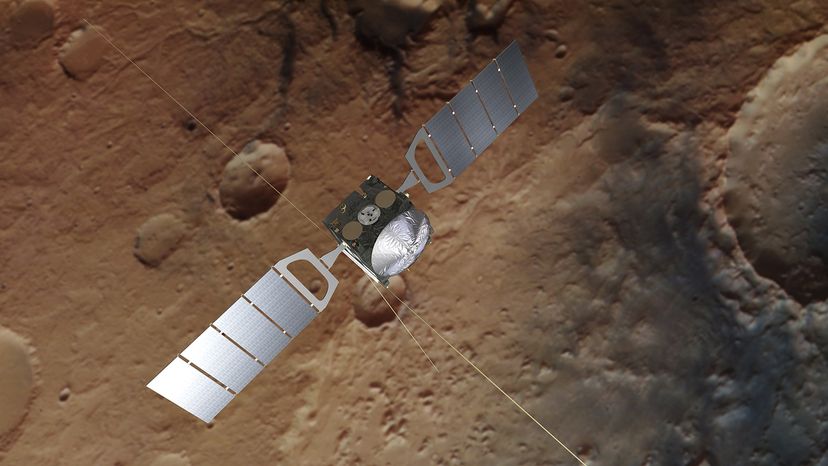
It's looking like Mars has a lake, and it's the first ever to be found on the planet. That finding comes courtesy of Italian researchers who dug beneath the thick ice covering the south pole of Mars with satellite radar. They first reported their unique findings on July 25 in Science.
Historically, Mars is no stranger to large quantities of water in solid or gaseous form, and the planet's surface once had liquid water, according to the evidence it left behind in surface rocks. But the question of whether liquid water still exists on Mars has been debated, with some suspecting that it might be hidden under the planet's frozen poles.
Advertisement
The Italian researchers turned to an instrument on the European Space Agency's Mars Express orbital probe to get some answers. It's called the Mars Advanced Radar for Subsurface and Ionosphere Sounding. MARSIS' ground-penetrating radar sends pulses toward the red planet's surface and times how long it takes for them to be reflected back to the satellite, as this ESA press release explains. It also tracks how strong the returned signals are. Those two factors vary depending on the material the radar pulses encounter. That data, in turn, can be used to map what lies beneath the surface.
So, with a little radar help, the scientists found that Mars' south pole is covered by multiple layers of ice and dust, which extend 0.9 miles (1.5 kilometers) beneath the surface. Under that, however, they found an area whose characteristics indicate that it is a lake, which the scientists believe is filled with water full of salty sediment.
"This subsurface anomaly on Mars has radar properties matching water or water-rich sediments," Roberto Orosei, of the Istituto di Radioastronomia in Bologna and principal investigator of the MARSIS experiment and lead author of the paper, said in the ESA release.
The lake stretches about 12 miles (20 kilometers) across, according to the release.
Advertisement
